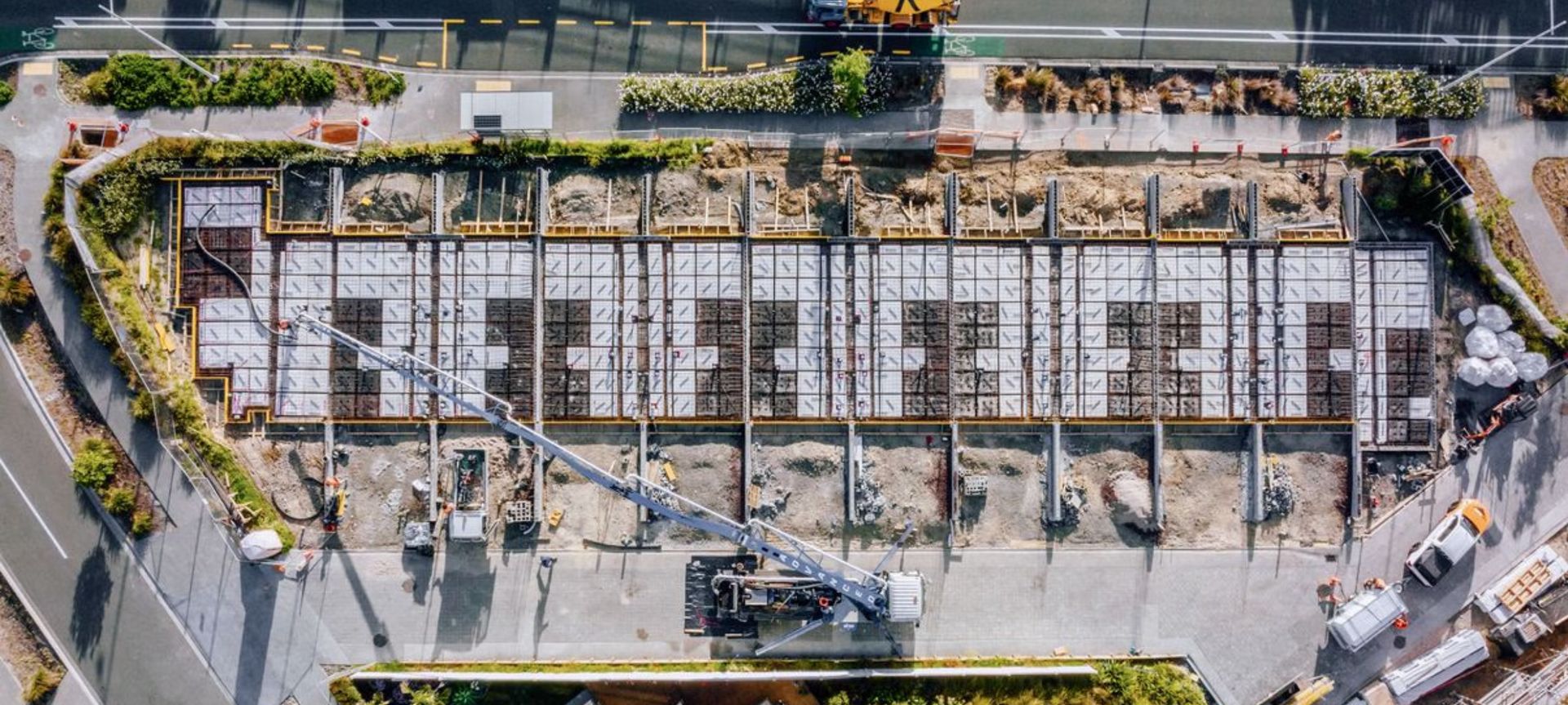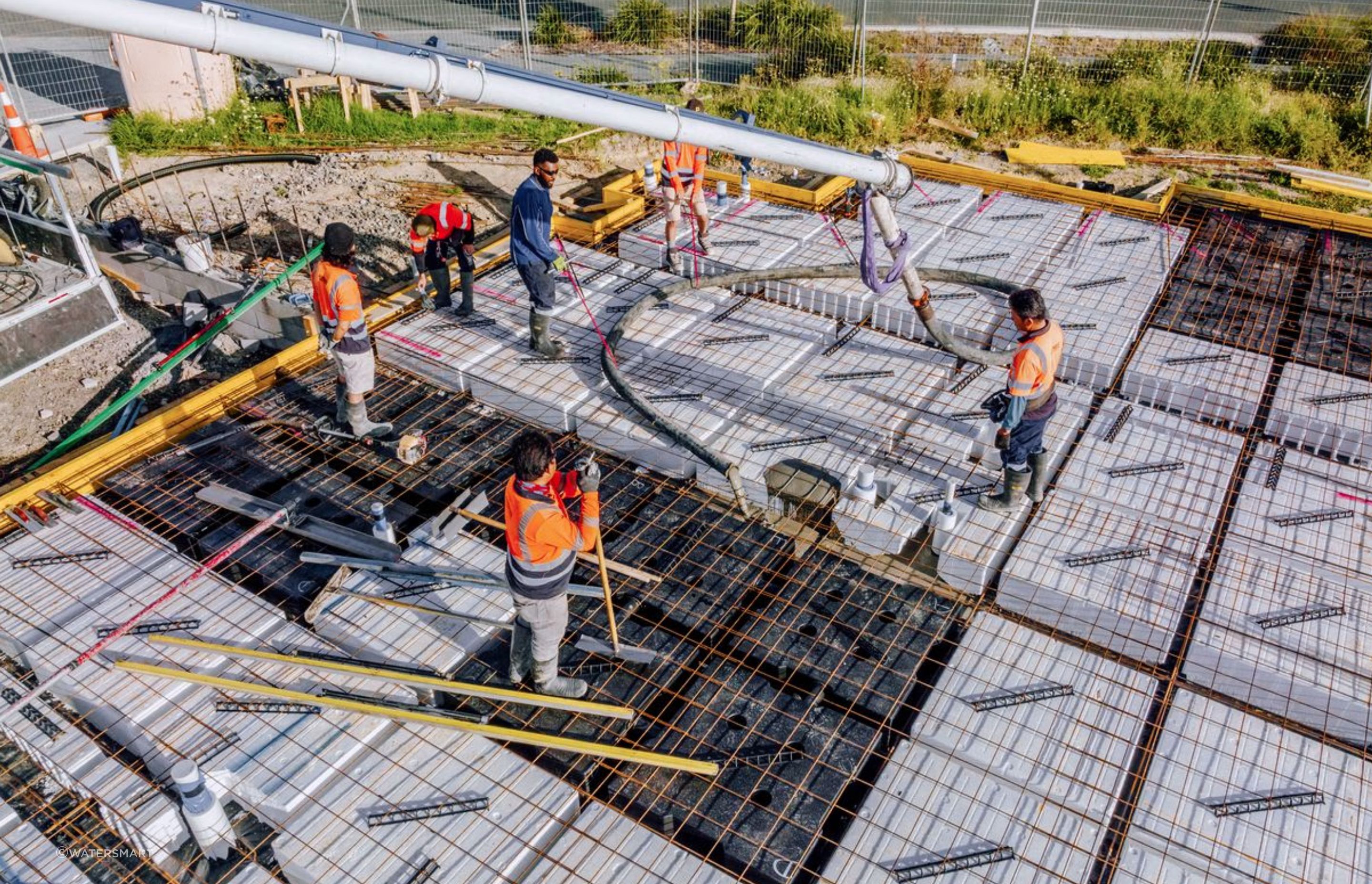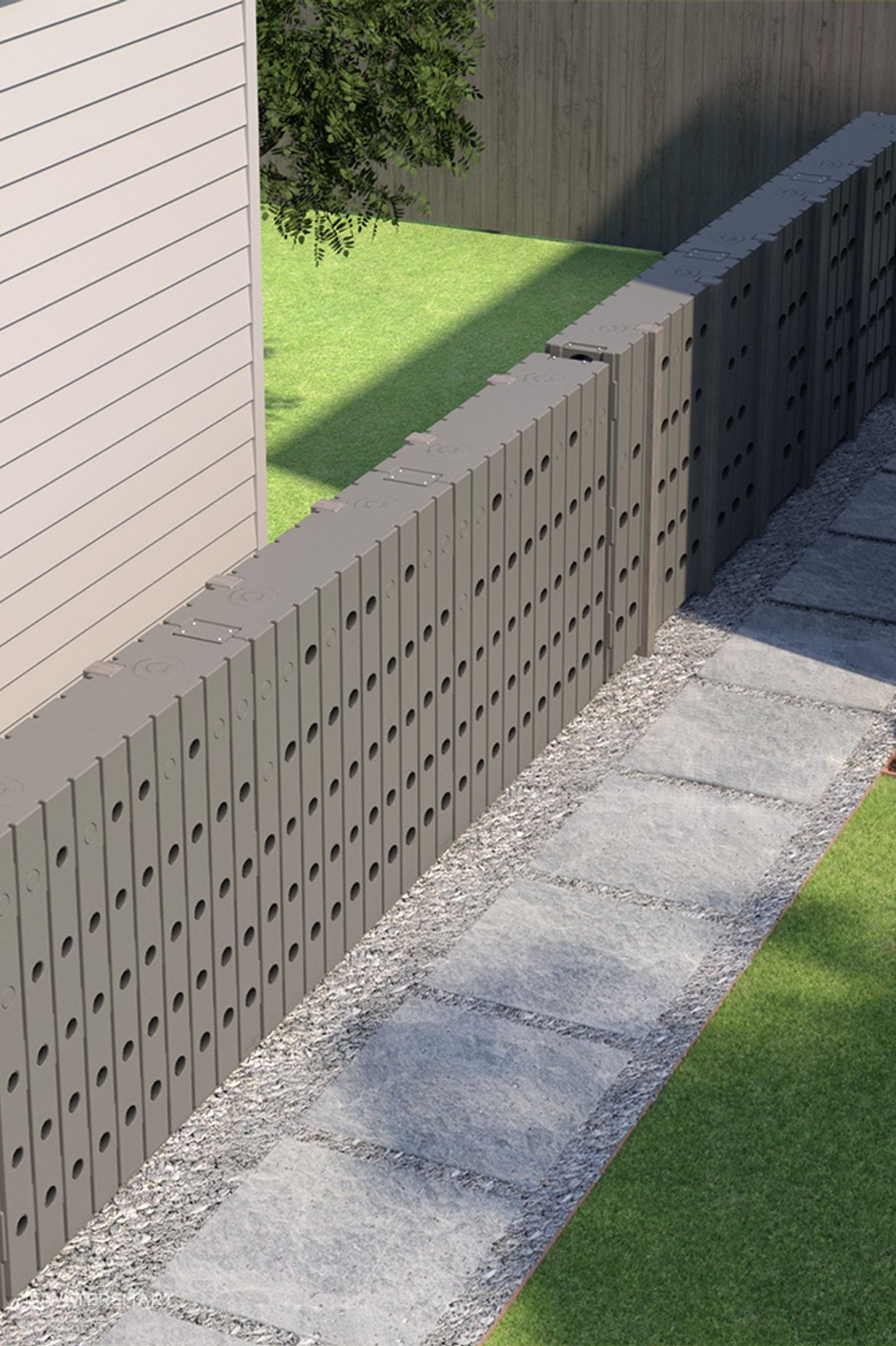How to improve water resilience in your next project
Written by
29 October 2024
•
4 min read

It’s a topic that’s becoming more and more of a focus as our cities become further developed: where does the water go and how can we make the most use out of what we have?
In Wellington, for example, the biggest ‘user’ of water is leaks – 42 per cent of our capital’s water disappears into the ground without being used, which presents a fundamental challenge from a carbon perspective, a cost perspective, utilisation of asset and resource perspective, not to mention the everyday inconvenience on people’s lives.
Stormwater management and rainwater reuse
“Especially in New Zealand, more and more councils are requiring either stormwater detention or what they call attenuation or water management, and we are experts in helping architects and engineers design to meet the requirements in the most cost-effective manner,” says Andrew Olsen, Co-Founder and Managing Director of Watersmart.
Working with design professionals nationwide to develop effective solutions for multi-residential and commercial projects, Watersmart also helps to solve physical issues like high invert levels, when there’s surcharge from foundations, high water tables and soft ground. “These sorts of issues are often major concerns when meeting density development requirements.”
Rainwater reuse is another area of focus as more companies look to reduce their carbon footprint, and Watersmart will be completing New Zealand’s first Neighbours assessment alongside PMG and NZGBC.
“Rainwater harvesting, or reuse, is the capture of that water – rather than just releasing it slowly into the stormwater system over 24 hours, it actually keeps the water and it is fed back into toilets for flushing, and to laundry and outside taps. For those who are paying for water, the utilisation of that water can halve their water bills, so it has a good return on investment. More and more councils are introducing this as a requirement,” says Andrew.
For commercial clients, especially those looking to meet their ESG targets, this should be front of mind. However, water metering is an essential starting point for water resilience.
“You can’t manage what you can’t measure. So, the first step is to measure the water usage, and then from there, you have a baseline, and you can then start looking at ways to lower that usage,” says Andrew. “The supporting data is pretty straightforward: when Auckland introduced water metres, they saved 25 per cent in water use from that day on. Then, when they started charging for water they saved another 25 per cent.”

Read more - Reuse, detention, and recycling: the key to stormwater attenuation
Maintaining water freedom
Beyond the benefits to the environment and the integrity of our infrastructure, effective water management enables water freedom – especially during summer when restrictions are often introduced.
“When designing a new home, building in water resilience as part of it is important. Climate change is real. We’re seeing it almost every day now, we either have too much water or not enough; we seem to be getting floods or droughts on a regular basis every season. So designing for water resilience as part of every job is a sensible thing to do.”
Watersmart’s top tips for water resilience
- Monitor your water usage. This also picks up any leaks and over-consumption.
- Collect rainwater as early as possible. Use this to wash vehicles and water the garden, for example.
- Use water-efficient showerheads and taps.
- If you have the ability to do so, recycle greywater.
- Get tanks and pumps checked regularly to ensure they’re working efficiently and don’t have any leaks.
- Reduce the flush volumes and frequency in toilets and urinals.
- If you’re using irrigation, look at usage and timing.


Read more - Innovative flood barrier now protecting Louis Vuitton, Gucci and the Everybody’s Precinct
“The biggest thing is to get us involved early in the process, usually at resource consent is best because we can help with solutions that don’t detract from the overall architectural design statement and achieve the best outcomes that regulators require in cost-effective ways,” says Andrew.
Experts in stormwater detention, rainwater reuse, water treatment, water measurement and flood mitigation, Watersmart is at the forefront of water conservation and resilience innovation. Their end-to-end offering covers every aspect of water system management – from planning and design to supply, installation, and maintenance.
For architects, Watersmart’s understanding of the different compliance requirements of councils around the country provides peace of mind that what you are implementing will get all the right ticks and reduce the time and cost associated with consents.
Get in touch with the team today to learn more.